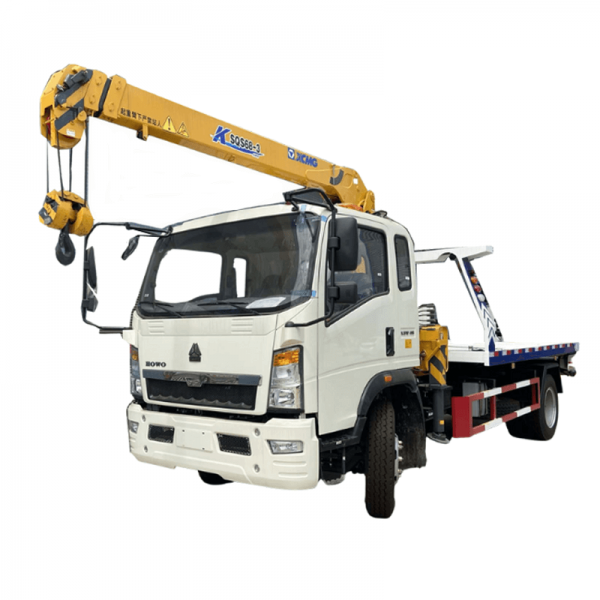Enhancing Work Truck Safety Key Features to Protect Workers and Improve Efficiency
Introduction
Work trucks are an essential part of many industries, from construction and landscaping to utility maintenance and transportation. These vehicles are used to transport equipment, tools, and materials to job sites, making them indispensable for carrying out various tasks efficiently. However, the use of work trucks also poses certain risks, especially for workers who operate or work around these vehicles. To minimize these risks and ensure a safe work environment, implementing key safety features in work trucks is crucial. In this article, we will explore the importance of work truck safety and discuss the key features that can help protect workers and improve overall efficiency.
Importance of Work Truck Safety
Work truck safety is a critical aspect of ensuring a secure and productive work environment. Accidents involving work trucks can lead to serious injuries, fatalities, property damage, and financial losses for businesses. By prioritizing work truck safety, companies can protect their employees, reduce the risk of accidents, and enhance operational efficiency. Moreover, promoting a culture of safety within the organization can improve employee morale, job satisfaction, and retention rates.
Key Safety Features in Work Trucks
1. Collision Avoidance Systems
Collision avoidance systems are designed to help prevent accidents by alerting drivers to potential hazards and assisting them in avoiding collisions. These systems use sensors, cameras, and radar technology to monitor the vehicle's surroundings and provide real-time alerts to the driver. Some advanced collision avoidance systems can automatically apply the brakes or steer the vehicle to avoid a collision if the driver does not respond to the warnings.
2. Blind Spot Detection
Blind spot detection systems are essential for work trucks that have large blind spots due to their size and design. These systems use sensors and cameras to monitor the vehicle's blind spots and alert the driver when there is a vehicle, pedestrian, or object in the blind spot. By providing visual or audible warnings, blind spot detection systems help drivers avoid accidents when changing lanes or maneuvering in tight spaces.
3. Rear-View Cameras
Rear-view cameras are valuable safety features that provide drivers with a clear view of the area behind the vehicle. These cameras help drivers navigate in reverse, park safely, and avoid collisions with obstacles or pedestrians. Rear-view cameras are especially beneficial for work trucks that have limited rear visibility due to their size or configuration.
4. Lane Departure Warning Systems
Lane departure warning systems are designed to prevent accidents caused by unintentional lane drifting or veering. These systems use cameras or sensors to monitor the vehicle's position within the lane and alert the driver if the vehicle starts to drift out of the lane without signaling. By warning drivers of lane departure, these systems help prevent collisions and keep the vehicle safely on course.
5. Fuel tank truck design -lock Braking System (ABS)
Anti-lock braking systems (ABS) are standard safety features in modern vehicles, including work trucks. ABS prevent the wheels from locking up during hard braking, allowing the driver to maintain steering control and avoid skidding. This feature is particularly important for work trucks that carry heavy loads or operate in challenging road conditions.
6. Electronic Stability Control (ESC)

Electronic stability control (ESC) is a safety feature that helps prevent skidding and loss of control in slippery or emergency situations. ESC uses sensors to monitor the vehicle's stability and applies brakes to individual wheels to help the driver maintain control. This feature is crucial for work trucks that carry heavy loads or operate on uneven terrain.
7. Tire Pressure Monitoring System (TPMS)
Tire pressure monitoring systems (TPMS) are designed to alert drivers when a tire is significantly underinflated, which can lead to poor handling, reduced fuel efficiency, and tire failure. TPMS help drivers maintain proper tire pressure, extend tire life, and improve overall safety on the road. This feature is especially important for work trucks that travel long distances or carry heavy loads.
8. Roll Stability Control
Roll stability control is a safety feature that helps prevent rollover accidents by monitoring the vehicle's stability and applying brakes to individual wheels to prevent tipping. This feature is crucial for work trucks that have a high center of gravity or carry top-heavy loads. By enhancing stability and preventing rollovers, roll stability control helps protect drivers, passengers, and cargo.
9. Emergency Brake Assist
Emergency brake assist is a safety feature that enhances braking performance during emergency situations. This feature detects when the driver applies the brakes suddenly and applies additional braking force to help stop the vehicle quickly and safely. Emergency brake assist is essential for work trucks that need to stop suddenly to avoid collisions or hazards.
10. Advanced Driver Assistance Systems (ADAS)
Advanced driver assistance systems (ADAS) encompass a range of safety features that use sensors, cameras, and artificial intelligence to enhance driver awareness and prevent accidents. ADAS include features such as adaptive cruise control, automatic emergency braking, pedestrian detection, and traffic sign recognition. By providing real-time alerts and assistance to drivers, ADAS help improve safety and reduce the risk of accidents on the road.
Conclusion
Work truck safety is a top priority for companies that rely on these vehicles to carry out their operations. By implementing key safety features in work trucks, businesses can protect their employees, reduce the risk of accidents, and enhance overall efficiency. From collision avoidance systems and blind spot detection to rear-view cameras and lane departure warning systems, there are various safety features available to help improve work truck safety. By investing in these safety features and promoting a culture of safety within the organization, companies can create a secure work environment and ensure the well-being of their employees.